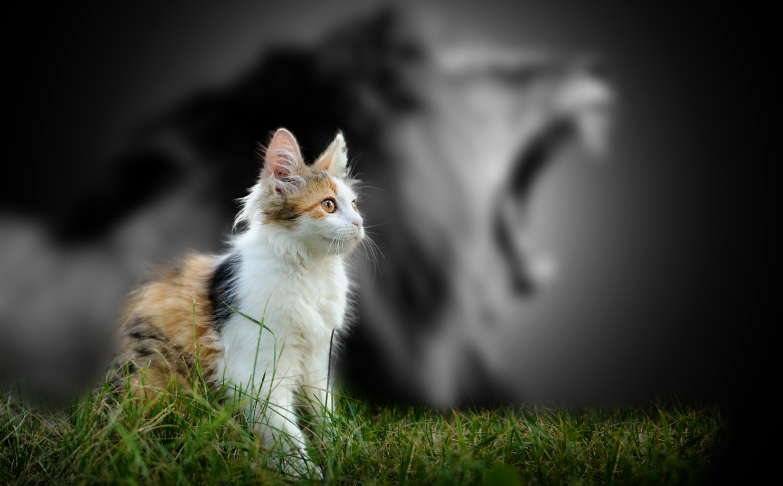If you’re like me; a person whose thoughts are consumed by cats pretty much always, you may find yourself wondering how your precious bundt cake of a snuggle lump ended up in your living room from time to time. You may peer down at your cat and cogitate on the earlier years when her ancestors roamed the jungles and forests as mighty predators. And, if you’re like me, or your cats are like mine, your thoughts may be interrupted by incredulous whining for treats, followed almost immediately by a stinky tuna cat fart. So mighty. So graceful. So regal.
Here is a brief history of how and when Miss Swiffertail Honey Schnookums came to be the refined domestic princess that she is.
1. The Wild Miacids
The wildcats we know of today, such as tigers, lions, etc., are descendants of prehistoric creatures called miacids. 62 million years ago, these carnivorous fuzzy dumplings feasted on small prey such as lizards and birds, and, from time to time, smaller mammals as well. Interestingly, some miacids were arboreal, meaning they hung around in trees most of the time, while others roamed the earth. Contrary to our assumptions that all cats in the prehistoric era were giant sabre-toothed tigers, the miacids were smaller in size with long tails and compact bodies.
2. Ancient Egypt
 Image:tiny_packages via flickr
Image:tiny_packages via flickr
Many are aware of the ancient Egyptians’ affinity for cats, and the spiritual significance that cats were given, having even been elevated to a godly status. Thousands of years ago, cats were first domesticated by these ancient cat-lovers in the Fertile Crescent (or the “Cradle of Civilization”, as it were). They were employed to keep vermin away from their food storage, and even kept as pets, where they were lavished with love and affection.
3. Spreading Cat Domestication Worldwide
So, how did cat domestication become a worldwide thing? Scientists believe that cats were domesticated of their own volition, both in Egypt and, from there, spanning across Europe, India, China, and Japan. Consider it this way: dogs were domesticated essentially for their hunting skills in the wild, but once people started settling down and abandoning their nomadic ways, they required a companion that could control the aforementioned vermin problem that occurred once we figured out how to store food. Enter: CATS. Cats got to feed on small prey, and us humans rewarded our feline friends who exhibited the most docile, if not affectionate nature. Survival of the Cutest – in terms of domestication, that is. To be frank, cat domestication was and is a mutually beneficial situation, simple as that.
Our Luscious Long-hairs
 Image: Jeff Oien via flickr
Image: Jeff Oien via flickr
Longhaired cats first began to appear in Turkey and Iran, where they were cherished for their elegant looks and keen hunting skills. After the Crusaders freakin’ WRECKED most of Europe with their highfalutin Holy Wars, what with their Black Plague and pestilence and all those other super awesome things, cats made a huge comeback in the 17th Century. The Roman Catholic church had previously declared that cats were tiny, furry devils (wow, rude), but after the plague wiped out, like, a billion people, longhaired cats won back their good favor by eradicating the flea-ridden rats that were lowkey accountable for most of that mess and saving the day. YAY CATS!
4. Pedigree Puddings
Image Koshka Hellqvist via flickr
So there you have it! From the ancient miacid to an array of cat breeds that are in existence today, cats have certainly come a long way. Be sure to spoil your sweet baby doodle with the love and affection befitting such a majestic creature!









Hey!!! Thanks for using one of my photos!
You’re welcome! 🙂
Pingback: Aby-a-Day – 13 May 2016: Ancestral Abyssinians (Friday Flashback) |
Exactly what I was looking for, regards for putting up.
Most welcome! 🙂